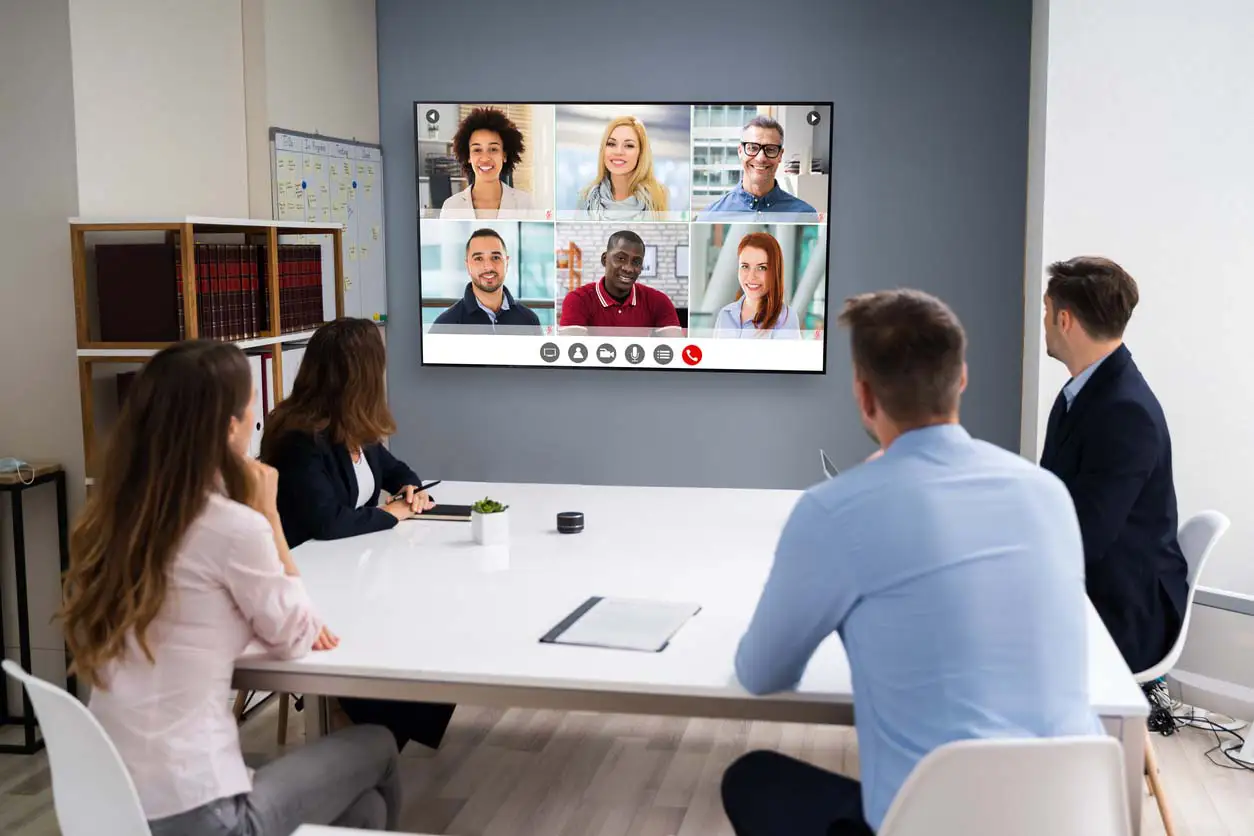Collaboration in the workplace now goes way beyond meeting around a water cooler or conference table. Today, globalization, technological advances and remote staffing have revolutionized the way we communicate and work together.
This changing “office” has a new standard that includes greater efficiency, a transformed workplace environment and a new norm. Millennials have certainly made their mark in the workplace and continue to make changes.
New technological advances have also brought a ‘face-off’ to old school corporate collaboration – video conferencing and AV are now used by a variety of businesses. They have discovered that it’s genuinely possible to create ‘face-to-face’ collaboration without actually being physically in someone’s presence – and you can save travel costs and employee stress, too.
That’s a win-win, of course. Except – in the real world – many organizations make a significant investment in collaborative technology, only to find it’s a struggle to get their employees to embrace it.
Video conferencing is certainly worth the effort. In fact, 56% of global CFOs say they would invest in video conferencing to reduce travel.
Businesses using video conferencing see a 30% decrease in travel costs. The cost of a domestic trip is estimated at $949 per person with international travel at $2,525. If just one employee reduces their travel by one day per month their company can save $11,000 per year.
It helps managers and coworkers deal with each other in a personal way while visually seeing their counterparts from any location in the world. Only 13% of the world’s workers feel engaged at work; the future of business collaboration will be dependent on organizations investing in a digital transformation and better supporting the increasingly mobile workforce through video conferencing.
So what’s still getting in the way of using 21st century collaborative tools?
Workers can be slow to adopt these money saving benefits – they think organizing a video conference is just too complicated, particularly across different time zones with multiple participants.
Also, finding rooms equipped with video conferencing equipment can be a nuisance.
To a busy employee, it can all seem like too much trouble, despite the obvious advantages. Fortunately, that’s where technology can step in and make the whole process a lot easier for everyone.
Selective meeting scheduling programs offer practical workplace solutions that integrate meeting room management and video conferencing.
A meeting and resource scheduling system allows employees to book meetings and video conferencing online with one touch from a laptop, tablet or smart phone, from anywhere they have an internet connection.
Finding an available room with VC equipment is easy, and time zones are no problem because advanced meeting scheduling software will automatically take it into consideration. If the meeting time changes all attendees are alerted through Outlook – even the caterers.
Bye-bye no-shows…
A further benefit of using meeting scheduling software is that it monitors who actually turns up to the meeting. If no-one comes, the space is automatically released back into availability, so valuable rooms do not stand empty.
Skype for Business simplifies business meetings with one platform for calling, conferencing, video and sharing. Owned by Microsoft, Office 365 is incorporated for users. Office space is expensive, and Skype for Business lets you collaborate without a fixed meeting space.
A complete collaboration solution, it integrates audio, video, instant messaging, web conferencing, and file sharing in one simple platform. Plus, it lets you know when someone’s online and available. You can coauthor in real-time using Word, Excel, and even in PowerPoint while presenting.
Good meeting scheduling software can be used in conjunction with Skype for Business while using Outlook to notify attendees of meeting time and any changes. When a meeting room is required, it can find the room, book it and notify all attendees. It’s just a push of a button.
Social media platforms play a role in office collaboration too, if permitted in workplace organizations. They allow team members, especially Millennials, to stay on point with content creation, assignments, deadlines, edits etc.
Social media tools employees are using:
> Evernote: organize content into notebooks that log individual notes. You can add text, images, and files to notes and share them with other users.
> Google Drive: create documents and share them with as many users as you need. Everyone can leave notes and comments.
> Basecamp: a web-based project management tool that allows the creation of to-do lists, sharing of files, and communicating with the project team.
> Slack: for team members who need to be in contact every few minutes. This is done through threads – similar to a private chat room.
Creating a collaborative, connected workplace
With collaboration as a real driver for innovation, it’s in every business’ interest to create the conditions that enable it to happen.
Video conferencing, Skype for Business, social media and meeting management software all play a role in real time connectivity and improved relationships among colleagues — not to mention saving money for organizations across the globe.
Efficient meeting scheduling software integrates with video conferencing and allows employees to find and book a meeting space, add desks, catering, wayfinding and more with one touch of a button.
Advanced space occupancy sensors linked to visual displays can even be added to make it even easier for them to identify available workspace.
And a good room scheduling app does all this from a smartphone or tablet. It saves organizations money on expensive real estate while improving employee meetings and productivity, and promoting wellbeing.
Collaboration made easy, anywhere, anytime; it’s how the real working world should be every day.
